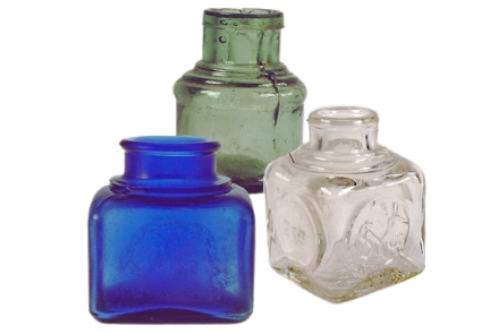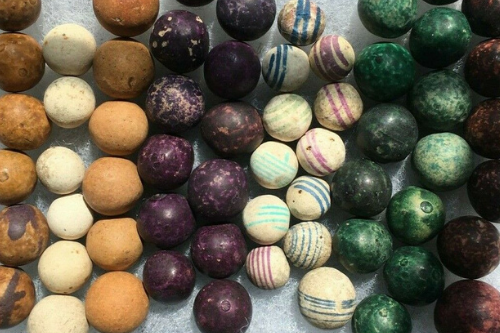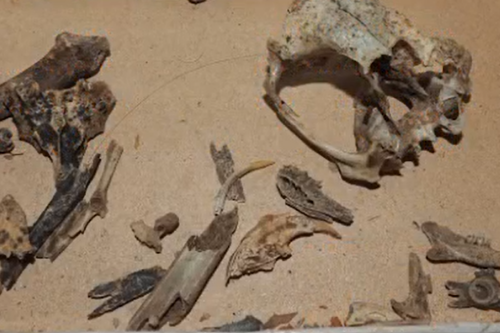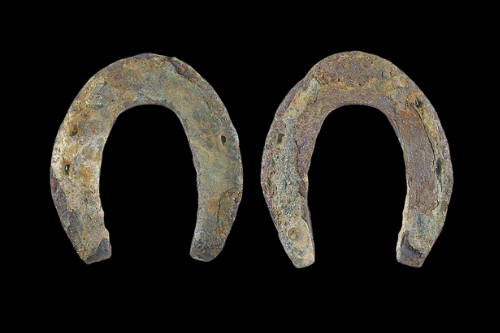
Historic Horseshoes
Historical archaeology connects places, things, and issues from the past or present using not only what is found during an excavation, but also written records and oral traditions that then help inform and contextualize cultural materials.
During the spring of 2021, Palomar College students in Professor Betsy Pain’s Anthropology 225 class created videos that can be used as comparative or reference collection guide, which are useful for educational and research purposes. This video series highlights different types of historic artifacts for which students compiled research. If you have any questions about these artifacts or topics, please email collections@sandiegoarchaeology.org.
Historic Horseshoes and Blacksmithing in San Diego
By Allison Scoda, Palomar College student
Summary compiled by Collections Manager Jessica McPheters
Introduction to Horseshoes
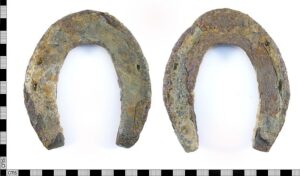
Horseshoes have allowed incredible advances in both agriculture and travel, and ultimately led to the ability for the global commerce system that we have today. A horseshoe is traditionally a crescent-shaped piece of metal that is attached to the bottom of a horse hoof to protect it from wear. Many different types of horseshoes have existed throughout history with differing forms and functions.
Origins of Horseshoes
The horseshoe was first introduced many thousand years ago, possibly originating as early as 400 BCE. Romans called them “Hipposandals”, and they were used to protect the feet of horses against rough terrain or extended travel. In Asia, early horseshoes were made from medicinal plants. Blacksmithing became a necessary and popular occupation, since the production of this technology allowed horses to be used for economic purposes.
It is unknown which society first nailed horseshoes into hooves, but some research regarding ancient gravesites leads archaeologists to believe that the Celts were possibly some of the first people to protect the feet of their horses with nailed-on horseshoes.
Rise of Blacksmithing
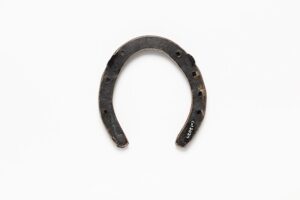
It is believed that horseshoeing became popular amongst the masses in Europe around 1000 CE. The earliest models were made from bronze and had scalloped rims as well as six nail holes. By the sixteenth century, blacksmithing had become a prized trade and contributed to the development of metallurgy.
The first horseshoe making machine was introduced during the Industrial Revolution and patented by Henry Burden in 1835. Eventually, this machine was able to produce more than 3,000 horseshoes per hour. A machine like this was invaluable to the Union Army during the Civil War, and Burden Iron Works had an output of fifty million horseshoes a year after this development.
Modern Horseshoes and Nails
There are many shapes used for modern horseshoes. Most of them are made from either steel or aluminum. Steel is a sturdy metal, but it is heavy and used more for working horses. Aluminum is a light metal and allows for the horse to run more quickly, so it is often used on racehorses.
Nails used in horseshoes also differ in size and shape. The identification of a nail can offer archaeologists and historians a more in depth look at how the horseshoe was possibly used as well as when and where it was made.
Historic Horseshoes and Blacksmithing in San Diego
Enjoy this informative video to learn more about horseshoes and blacksmithing in San Diego. Come back next month to learn about historic early twentieth century beauty products!


